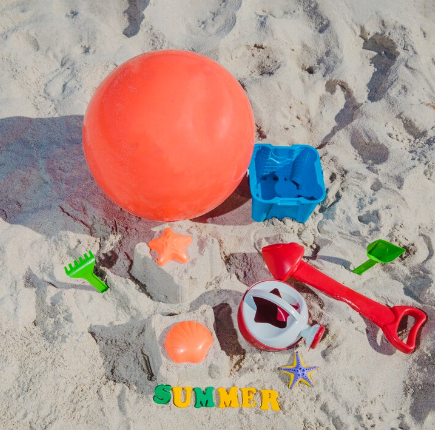Sand play is not just a fun activity for toddlers—it's also a valuable learning experience that promotes cognitive, sensory, and social development. Sand toys specifically designed for toddlers offer numerous benefits beyond entertainment, fostering creativity, fine motor skills, and imaginative play. Let's delve into the world of sand toys for toddlers and explore their multifaceted role in early childhood development.
First and foremost, sand toys provide toddlers with opportunities for sensory exploration and tactile stimulation. The texture of sand offers a unique sensory experience, allowing toddlers to explore different sensations as they scoop, pour, and mold the sand with their hands and toys. This sensory play helps toddlers develop their sense of touch and proprioception, enhancing their awareness of their bodies and the world around them.
Moreover, sand play with toys encourages toddlers to engage in imaginative and creative play. From building sandcastles to pretending to cook in a sand kitchen, toddlers can use sand toys to create imaginative worlds and scenarios. This type of imaginative play fosters creativity, problem-solving skills, and language development as toddlers use their imagination to narrate stories and interact with their environment.
In addition to fostering sensory and imaginative play, sand toys for toddlers also promote fine motor skills development. Activities such as scooping, pouring, and manipulating sand with tools like shovels, buckets, and molds require precise hand-eye coordination and finger dexterity. These fine motor skills are essential for tasks such as writing, drawing, and self-care activities, making sand play with toys a valuable developmental opportunity for toddlers.
Furthermore, sand play with toys provides toddlers with opportunities for social interaction and collaboration. Sharing sand toys, taking turns, and cooperating with others in building sand structures promote social skills such as communication, cooperation, and empathy. Sand play also encourages parallel and cooperative play, allowing toddlers to engage with peers while pursuing their own interests and goals.
Beyond the developmental benefits, sand play with toys offers toddlers a sensory-rich outdoor experience that promotes physical activity and exploration. Playing in the sand encourages toddlers to move their bodies, dig, run, and explore their surroundings, contributing to their physical development and overall well-being. Additionally, outdoor play in natural environments like the beach or sandbox exposes toddlers to the elements, allowing them to experience sensory stimuli such as sunlight, wind, and the sound of waves, which are essential for holistic development.
When choosing sand toys for toddlers, opt for sturdy, age-appropriate toys that are safe and durable. Look for toys that are easy to clean and sanitize, as sand play can get messy. Simple toys like shovels, buckets, molds, and sifters are versatile and can be used in a variety of sand play activities. Avoid toys with small parts that could pose a choking hazard and ensure that all toys are free from sharp edges or potential safety risks.
In conclusion, sand toys for toddlers offer numerous developmental benefits beyond just fun and entertainment. From promoting sensory exploration and imaginative play to fostering fine motor skills development and social interaction, sand play with toys is a valuable learning experience for toddlers. By providing toddlers with opportunities for creative, hands-on play in a natural and sensory-rich environment, sand toys contribute to their holistic development and overall well-being.





Comments